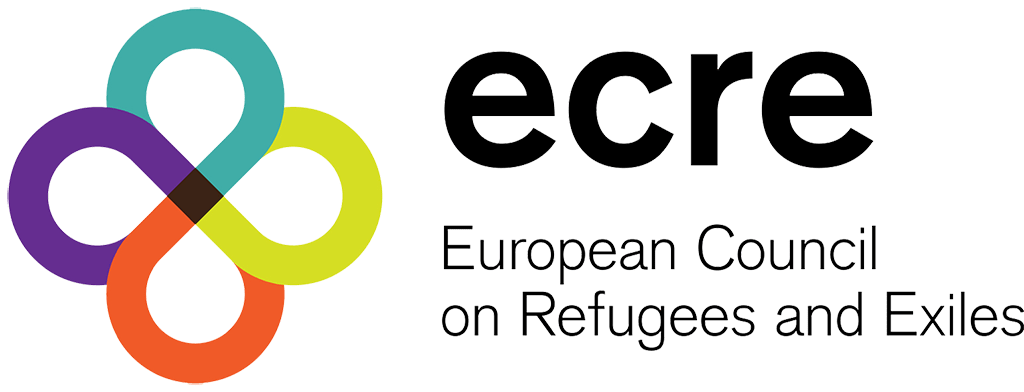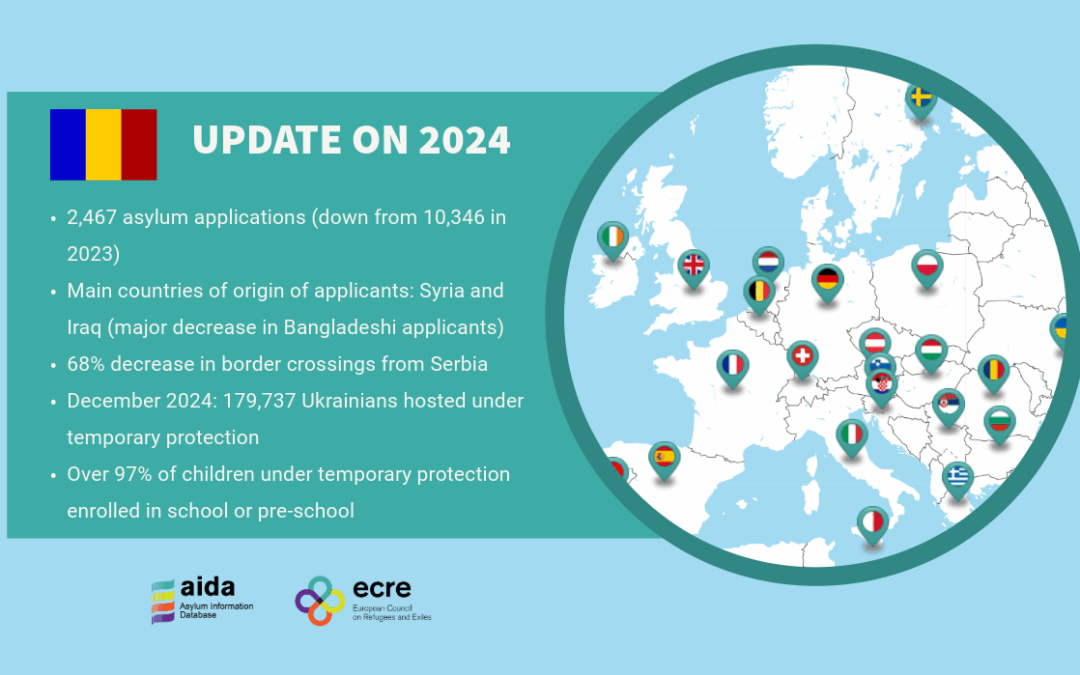The updated AIDA Country Report on Romania provides a detailed overview on legislative and practice-related developments in asylum procedures, reception conditions, detention of asylum applicants and content of international protection in 2024. It is accompanied by an annex which provides an overview of temporary protection.
A number of key developments drawn from the overview of the main changes that have taken place since the publication of the update on 2023 are set out below.
(A) International protection
Asylum procedure
- Statistics: 2,467 asylum applications were lodged in 2024. This represented a significant decreased from 2023 (10,346). The main nationalities of applicants were Syrians (759) and Iraqis (232), while there was a significant decrease in the number of Bangladeshi applicants: 126 (down from 2,821 in 2023). There was also a decrease in the number of children arriving: 348 (of whom 157 were unaccompanied) compared to 933 in 2023 (159 unaccompanied).
- Legal developments: The Asylum Act (Law No. 122/2006) was amended in March 2024 in order to further align it with EU standards. In addition, the Aliens Ordinance was republished in July 2024. Despite Romania’s participation in EU pilot projects, staffing was reduced to 24 case officers (39 in 2023). The National Implementation Plan for the EU Pact on Migration and Asylum was submitted in December 2024 and approved in January 2025.
- Borders: The number of reported attempted entries from Serbia decreased significantly to 259 (803 in 2023). This 68% decrease was attributed to co-operation with Serbian authorities, reinforced surveillance and changing migration routes. In addition, there was a significant decrease in the number of readmissions to Serbia (fewer than 40 compared to 214 in 2023).
- Procedures and interpretation: Although interpretation services continued to be provided, including via videoconference, gaps remained for certain languages and complaints about quality persisted, particularly at the appeal stage. Incoming Dublin transfers resumed in 2024 and four were carried out. The accelerated procedure was applied in 22.5% of cases (38.5% in 2023). Legal representation for unaccompanied minors remained limited due to a funding gap.
Reception conditions
- Capacity: An additional 540 reception places were created in 2024 (240 in Arad and 300 in Galați). In addition, some refurbishments were undertaken.
- Labour market access: Asylum applicants faced increasing difficulties in accessing employment due to language barriers, lack of qualifications and growing anti-migrant discourse.
Detention of asylum applicants
- Vulnerable applicants: There were no reports of vulnerable people being placed in detention in 2024.
- Detention conditions: The opening of a new EU-funded wing in the reception centre in Arad expanded its capacity to 400 and improved material conditions. However, poor conditions persisted in Otopeni, including a lack of outdoor access for detainees and deteriorated infrastructure.
Content of international protection
- Integration: Integration projects run by NGOs resumed after a six-month funding gap.
- Cessation of international protection: 53 cessation decisions (27 refugee status and 26 subsidiary protection) were issued in 2024 (84 in 2023).
- Family reunification: 295 applications were submitted in 2024 but only 96 were approved. Waiting times remained between six and nine months.
- Employment and healthcare: Beneficiaries of protection continued to face barriers regarding access to work and most of them continued to be employed in low-paid sectors. Access to healthcare was hindered by language barriers, long waits for specialists and difficulties registering with family doctors.
(B) Temporary protection
- Statistics: By the end of 2024, Romania hosted 179,737 temporary protection holders, including 1,674 unaccompanied or separated children.
- Housing and benefits: The “50/20” scheme was replaced by new allowances: 2,000 Romanian Leu (RON) per month per family (750 RON for a single person) for accommodation and 600 RON per person per month for food, generally for four months. Continued support was tied to employment or school enrolment. The effectiveness of this form of support was limited by delays and reduced coverage.
- Employment: A new procedure was introduced in July 2024 to facilitate refugee employment but challenges persisted, particularly due to language barriers and unmet childcare needs.
- Education: 48,767 Ukrainian children (97.4%) were enrolled in schools. Romania ratified an agreement with Ukraine on the recognition of educational documents, and established a commission to support enrolment and counselling.
- Social support: Temporary protection holders who had registered before July 2024 became eligible for child allowances and social benefits equal to nationals. Those arriving later received transitional financial support before accessing the same benefits.
The full report is available here and the annex on temporary protection is available here.
For more information about the AIDA database or to read other AIDA reports, please visit the AIDA website.

